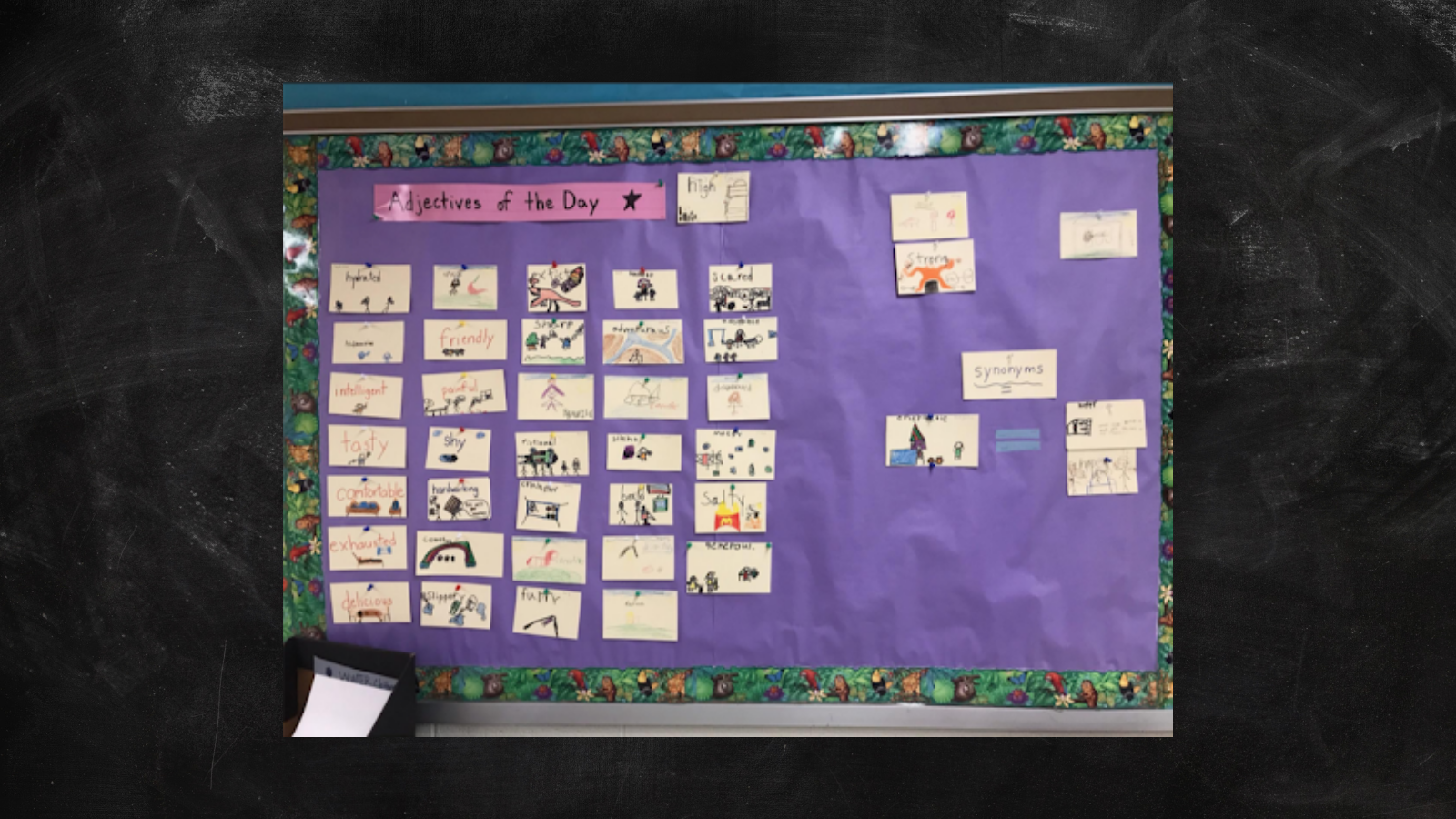10 Free Exciting Review Games For Teachers of All Subject & Grades

Our teachers and candidates know well that classroom instruction goes beyond lectures and worksheets. Their challenge is to find ways to get students excited about learning, while also helping them retain the new material. In fact, incorporating retention strategies is just as important as the material being presented. Without a focus on retention, students risk forgetting previously learned skills and concepts. By only utilizing short-term memory, students often struggle when quizzed for comprehension weeks or months later.
Research has long supported gameplay’s positive function in learning, thanks to their ability to motivate and engage, with “winning” - or, retaining the most information - the reward. To boost students’ ability to recall information or use skills on-demand after a few weeks have passed, teachers can plan fun and interactive review games like those created by our most recent cohort of Rutgers Alternate Route teachers.
These games are designed for multiple disciplines, breaking from overused review formats like Jeopardy and Kahoot, and most of them requiring no technology. These games use exciting and fresh methods to encourage information recall, are free for all to access and can be customized for use in any content area and at any grade level.
Read on below to browse each game design and access instructions!
1.

Charades
Rachel M.
Rachel uses the timeless classic “charades” to help her ESL students better understand the adjectives they’ve learned. She provides four categories with adjectives, with the students picking an adjective card and looking at the word without letting anyone else see. The students then utilize their creativity to act out the word. They can give verbal hints like the first letter of the word or what it means. If peers know the answer, they can call out the adjectives.
2.
.png)
Components of Golf
Katherine S.
Katherine created the game Components Golf for her sixth grade physical education students. In groups of three, the students combine their physical and mental skills by answering questions and tossing bean bags into a hoop. The team counts how many tries it takes to land the bag into the hole. Once the bag lands in the hole, the group of three can move onto the next question. At the end, the class adds up their number of tosses and goes over each question and answer. Students subtract their number of correct answers from their total tosses. Like golf - the team with the lowest score wins. After, group scorecards are collected to ensure student objectives are met.
3.
.png)
Rapid Pictionary
Daniella L.
Foreign Language teacher Daniella breaks her students into two teams to work on their Italian retention through a game of Rapid Pictionary. The first team selects one student to draw a picture representing a vocabulary word about nature. Students from the same team look through their notes and say words in Italian to guess vocabulary words. Once guessed, students collaborate to create a sentence in Italian to demonstrate meaning of the vocabulary word. The second team will not only try to beat that time, but analyze the first team’s sentence to determine if the context of the sentence would allow for understanding of vocabulary words. A winner is determined by comparing times and round completion.
4.
.png)
The Good, The Bad, and The Neutral
Melissa K.
To wrap up her mutation and genetics lessons, Melissa uses a review game she calls The Good, the Bad, and the Neutral. In this game, teams are made of four-to-six students, with a designated score keeper, time keeper/ judge and question master/judge. The Question Master picks and reads questions contributed by the class and the instructor. Teams then have 30 seconds to answer the question by writing down their answer on paper, with the Question Master and the Time Keeper walking around the room and determining the correctness of the answers. If they disagree, the Score Keeper will be the tie breaker. For each correct answer, the team earns a point and the chance to toss a ball into the basket and earn a mutation. If your teammate makes the basket, you decide if your random mutation will have a good, bad, or neutral outcome. The good, your team gets one point, the bad, your team takes a point from another team, the neutral, your team gets another shot at a basket.
5.
.png)
The GREAT Escape
Nick D.
To review key concepts from the lesson, fifth-grade science teacher Nick D. set up an escape room. Students were told that their planet was being destroyed and they needed to find a way off. However, before they can escape, they must decrypt a message. To participate, students are split into groups and must work as a team. Nick sets up multiple stations for students to work, with each including a stack of review questions. Once the task is complete they move on to the next station.
6.
.png)
Stinky Feet
Marianela B.
Marianela B. introduced a new way to review with the Stinky Feet Game, a game that groups students into teams based on specific learning needs. Together, students must decide as a team the correct answer to the question, with each question in a different format. The key is for students to collaborate and discuss their answers before giving their group’s answer. If the groups’ answer is correct, a group representative is allowed to take a sticky note off of the foot picture. On the back of the sticky note the group will see how many points they earned for that question. Some sticky notes have silly sentences instead of notes - these are the “stinky notes.” If they get a “stinky note,” the student will read it to the class. To differentiate the game, groups are given different questions that will allow each group to succeed.
7.
.png)
Safety and First Aid Silent Ballz Review
Denise T.
Health & Physical Education teacher Denise T. takes review quizzes to the next level by engaging her students in the question development process. Students prepare true-or-false and multi-step review questions for class. When time to play, students move all desks into a “U” Shape where all desks face each other. A student given a ball will randomly select another student to toss the ball to. The student throwing the ball must ask a question, and the student the ball is thrown to must NOT ONLY catch the ball, but be able to answer the question OTHERWISE they will be out. The student who is answering the question, will have a minute to answer before they lose their chance, and become out. Once a student gets out, they must sit in their seat behind their desk. The last player “standing” (or seated on their desk) is the winner!
8.
.png)
Build to $1.00
Russell T.
Students in Russell’s Second Grade class learn about money by playing Build to $1.00. In this game, students roll dice that represent money. As they keep rolling the dice, they add the amounts together and collect the correct coins for the amount of money they have so far. They are able to trade off coins for other coins as they collect more and more money. If they are playing with a partner, they can also trade with them. This game teaches the students addition, while also reinforcing how to identify each coin and its value. The goal of the game is to reach $1.00.
9.
.png)
Biology Bingo
Stacey Z.
Stacey Z.’s ninth-grade Biology class reviewed their genetics unit with Bingo. Just like a normal Bingo game, students received a game board filled in with various terms, definitions and concepts by the students. Students fill in their middle free space, as well as the 24 blank squares with the numbered question cards. Students place the numbered questions in any order on the board. Students are asked the series of questions that were given to them for their Bingo squares. The goal of the game is to get five in a row. If the student is incorrect, they may assist another student in completing their questions and board game. Students who win the game are offered a trip to the school store for pencils and other essentials, or receive a free question on the upcoming exam.
10.
.png)
Trouble in History
Brad B.
Brad’s class reviewed their History unit with a simple game of Trouble. Just like the childhood classic board game, each student picks a color, with each player popping the button in the middle of the board to see the number of spaces. However! The player cannot move those spaces until they answer a question. If the player rolls a one or a six, they get to choose either an “easy,” “medium” or “hard” question. If the answer is incorrect, the card is placed under the pile and the player remains at their spot. A correct answer means the player moves forward. As many who have played the game already know, the player who has all their pieces in their safe zone wins!
Read also:
9 Teacher-Designed Classroom Learning Retention Games That DON’T Require Technology
9 Tech-Free Assessment Review Games For K-12 Teachers
If you’re considering following your dream of teaching, Rutgers Alternate Route can offer you the support and training you need to succeed. Be sure to follow Rutgers Alternate Route on Twitter and sign up for Alternate Route’s monthly newsletter for more information and stories from the field of education.

 Heather Ngoma has over 25 years of experience collaborating with educators across New Jersey to drive education innovation. She currently serves as the Director of the Rutgers-GSE Alternate Route Program in the Department of Learning and Teaching, a program which helps career changers, recent college graduates, and other aspiring education professionals become licensed teachers in New Jersey. Follow her on Twitter @heatherngoma.
Heather Ngoma has over 25 years of experience collaborating with educators across New Jersey to drive education innovation. She currently serves as the Director of the Rutgers-GSE Alternate Route Program in the Department of Learning and Teaching, a program which helps career changers, recent college graduates, and other aspiring education professionals become licensed teachers in New Jersey. Follow her on Twitter @heatherngoma.





